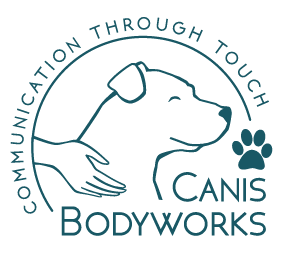Start Learning today!
Physical Dog: Online
This two-part course begins with an online dive into the dog's 11 body systems. You'll learn the major structures and functions of each system and how massage benefits them. This course is packed with text, images, videos, and everything you need to know about canine anatomy and physiology in order to effectively practice as a canine massage and bodywork practitioner. The course materials also serve as an ongoing reference tool because learning the ins and outs of the dog's body systems takes time and practice.
This course requires the purchase of a supplemental text: Dog Anatomy: A Coloring Atlas by Robert A. Kainer, DVM, MS and Thomas O. McCracken, MS (max $50).
CE hours approved for NBCAAM.
Write your awesome label here.
What's included?
-
15 Modules
-
22 Lessons
-
19 PDF Downloads
-
26 Videos
-
14 Quizzes
-
1 Final Exam
Fundamentals of
Anatomy & Physiology
Understand the dog from the inside out. Learn the essential functions of each canine body system and the structures that make up each system in order to become a more knowledgeable, competent professional.
Further Develop Your Understanding of Structure
Build on what you learned in previous courses with expanded details about the muscular and skeletal systems. This is the next step in acquiring a full understanding of these crucial, but complicated, body systems.
Write your awesome label here.
Planning to take the workshop, too?
Sign Up Now!
St. Louis
Virginia
Canada
Chicagoland
Welcome to Physical Dog - Part 1
Next Step...
Physical Dog: Workshop
In Part 2 of Physical Dog, you'll take a hands-on approach to solidifying your existing understanding of canine skeletal and muscular anatomy and expanding it even further through practice with live dogs and skeletal models. The next step in understanding musculoskeletal structure happens here, when you'll learn where each muscle attaches to the bones. You'll also explore gait patterns and learn how to recognize movement imbalance and pain. Being able to understand what's "normal," will make it easier to recognize when it's not.
Click your preferred location below to find out more about this workshop.
Click your preferred location below to find out more about this workshop.
Patrick Jones - Course author



